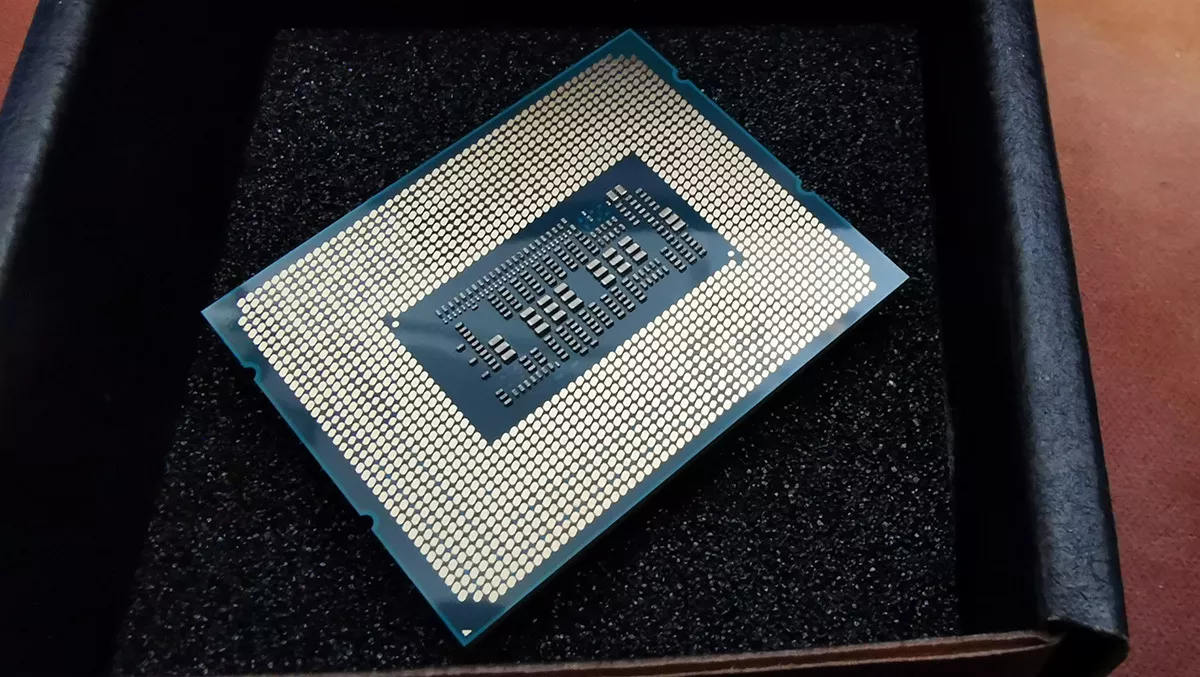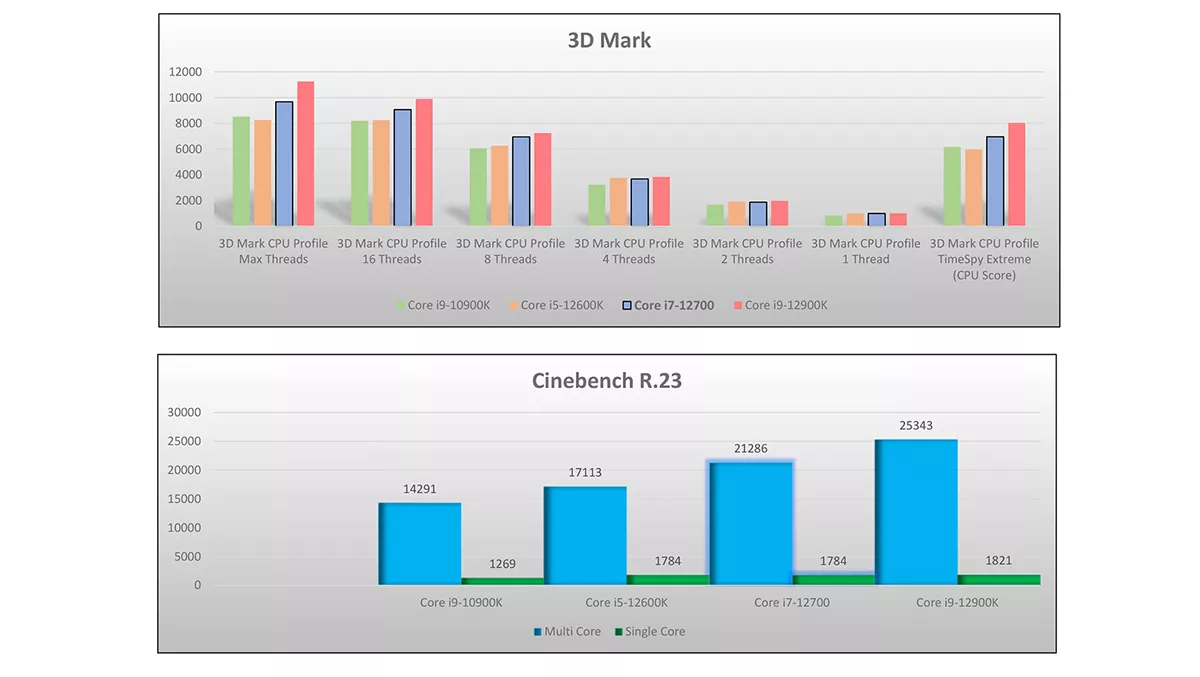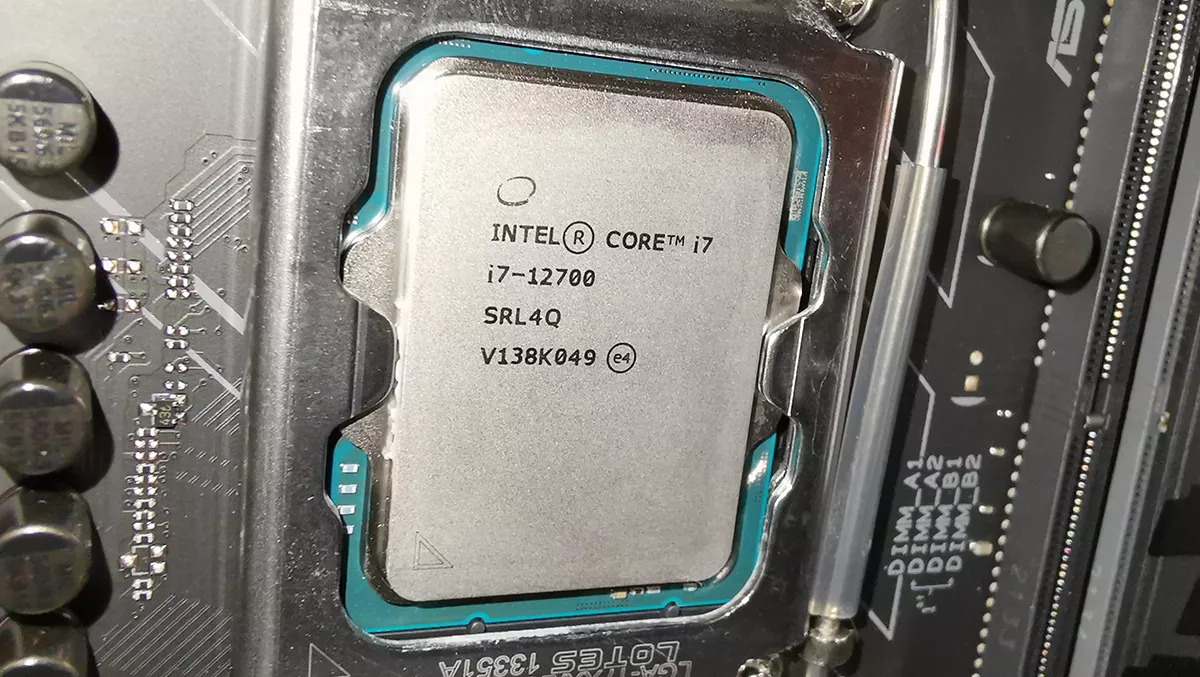
Hands-on review: Intel Core i7-12700 CPU
Intel's middle-of-the-road 12th generation Core i7-12700 offers performance at a lower price than the pricey Core i9 for users that are not fussed by overclocking.
Intel's 12th generation Core CPU line-up, codenamed Alder Lake, changes things up from previous years. The CPUs look a bit different, with a rectangular shape, instead of the square as with previous chips, and a new LGA 1700 socket on the motherboard.
In previous years, upgraders have enjoyed an overlap between generations allowing the same memory modules, cooling systems, and even motherboards to be used with the incoming CPUs. Both the 10th and 11th generation Intel Core CPUs utilise the same LGA 1200 socket and the CPUs, themselves, have looked the same since the Skylake S CPUs back in 2015.
Also new for the 12th generation CPUs is the support for DDR5 memory. These modules, which were scarce at launch, remain rather expensive. Some motherboard manufacturers are still producing motherboards that support both the new CPUs and older DDR4 memory.
Of course, new PC owners can just jump right in and enjoy Intel's new generation of CPUs, it is just upgraders who may find it easier to just start afresh this time. And it may be time to do just that.
Intel will likely not agree, but they've been treading water for the last few years. The company's desktop CPUs have seemingly been stuck with a 14nm fabrication process whilst their main competitor, AMD switched to a more efficient 7nm fabrication in 2020. The 12th generation sees Intel adopting what it calls "Intel 7" fabrication, which is actually a 10nm process.
The Intel Core i7-12700 supplied for review lacks the "K" suffix that can be found across the company's Core range of consumer CPUs. This means that this version of the i7 is not suitable for overclocking, something that most users will be fine with, especially those working in a corporate setting where stability is more important that your framerate in Call of Duty. You also save a few dollars over the i7-12700K.
I'm a great fan of Asus motherboards and their ability to squeeze a little out of unlocked CPUs without any effort on my part (my days of having the time to cook CPUs within an inch of their lives have passed). I've employed the same ASUS TUF Gaming Z690-Plus WiFi D4 that I used to test the unlocked i5 and i9 with the same DDR4 memory and CPU cooler.
The Intel Core i7-12700 was tested with several benchmarking suites simulating a mixture of uses from simple office applications, video and photo editing, 3D rendering, and gaming. The results were compared against those of the previously tested Core i5-12600K and Core i9-12800K, with results from a Core i9-10900K included as a sensibility check. Performance of both the core i5 and Core i9 was slightly boosted via the Asus motherboard's automatic AI overclocking. The Core i5, being a locked CPU was unable to be afforded the same boost.

FutureMark's PC Mark results showed the i5 sitting, performance-wise, where it should be between the i5 and the i9 for the extended test and the applications test. The express test and the main PC Mark test positioned the i7 below the i5. The i7 also considerably outperformed the 10th generation i9 CPU. Crossmark, which uses real-world, open source office programs for its benchmarks also positioned the i5 below that of the i5-12700K across the full range of tests.
UL Procyon, which uses full installations of MS Office and Adobe software to benchmark office and creative applications, had the i7 performance almost exactly between the i5 and i9, as expected- except for the video editing test whereby, yet again, the i7 was beaten by the i5. Thankfully, there were no surprises with the Performance Test 10.1 results with the i7 resting in its rightful position between the i5 and i9. The 3D Mark CPU results and those of the multi-core and single-core Cinebench R.23 tests offered an explanation for the i5's shortcomings in the PC Mark, Crossmark, and UL Procyon tests.
Some of the anomalous results are likely due to the lack of overclocking capabilities of the Core i7-12700 and the small AI overclocking boost afforded to the unlocked i5. But this isn't the entire story and also is not the concern that it may appear. It does, however, illustrate why you really need to choose the right CPU for your intended use.

New for this 12th generation of Intel desktop CPUs is the introduction of efficient core and performance cores. Efficient cores carry out the more mundane, but no less important housekeeping duties, whilst the performance cores produce the actual goods. The Intel i7-12700 has 12 cores and 20 threads. That's eight performance cores and four efficient cores. The performance cores have a base frequency of 3.60 GHz and a Max boost of 5.0 GHz. The i9-12900K's 16 cores and 24 threads and the i5-12600K's 10 cores and 16 threads. The AI overclock boosted the one to two core frequency of the unlocked i5 to the same 5.0 GHz as the locked i7.
The 3D Mark CPU Profile benchmark tests the performance of operations that utilise a single thread, two threads, four threads, eight threads, and the maximum number of threads. From the results, you can see the diminishing returns the fewer threads being utilised, even with the buffed-up i9. It's similarly illustrated using the Cinebench R.23 3D rendering benchmark. The single-core results for the i5, i7, and i9 are essentially the same (coincidently the i5 and i7 single-core results were EXACTLY the same). But the for the multi-core benchmark the results scaled appropriately with the number of cores available.
Whereas the grunt of the i9 ensures that even with few active cores the CPU still out-performs its siblings, the same can't be said for the i5 and i7 which, when running simple applications, are acting as essentially the same CPU (in my case made even worse by the sneaky overclock that the Asus board gave the i5). Of course, as more cores are utilised the performance gap between the two chips increases with the i7 really coming into its own and leaving the i5 in its dust.
The above highlights what exactly you are paying for with Intel's desktop CPUs. The i5, locked or unlocked, is for the budget-conscious, but will still run games and office programs, as well as image editors, with ease. At the other end, the i9 is for creative work and applications requiring a lot of number-crunching, such as 3D rendering. It also runs games spectacularly, but it's a bit of an overkill.
The Core i7-12700 offers a balance of high-end performance without such a high price tag compared to the i9. It also runs cooler, a max of 71 degrees under a 100% load stress test against the i9's 81 degrees, and thus more economical for less aggressive use.
But what of the lack of overclocking capabilities? Well, all overclocking, even the AI overclocking offered by Asus motherboards. Whilst not likely to cause the PC to burst into flames in quite the same way an enthusiast's ill-configured overclock could, even a mild overclock can cause system instability. Probably not a problem in the middle of a game of Fortnite, but nobody wants a blue screen of death whilst preparing a mission-critical report.
Just as there's no point in paying for CPU performance (and the subsequent electric bill) that you are not using, there's no point in paying for an unlocked "K" suffixed CPU if you don't need it, especially if you are specifying for many PCs.
If the Core i5 is the everyman CPU and the i9 the pumped-up rockstar, the Intel Core i7-12700 is the cool kid, sensible but ready to party as required. Outside of corporate applications, though, the Core i7-12700K would probably still be my CPU of choice, just in case the cool kid feels the need to really let their hair down.


